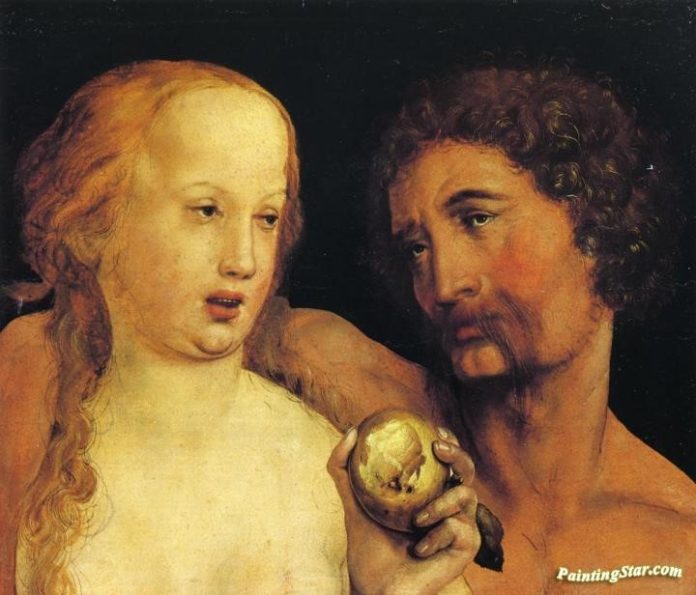But the snake said to the woman: “You certainly will not die! God knows well that when you eat of it your eyes will be opened and you will be like gods, who know good and evil.” The woman saw that the tree was good for food and pleasing to the eyes, and the tree was desirable for gaining wisdom. So she took some of its fruit and ate it; and she also gave some to her husband, who was with her, and he ate it. Then the eyes of both of them were opened, and they knew that they were naked; so they sewed fig leaves together and made loincloths for themselves.
According to G.K. Chesterton in The Common Man, pornography “is not a thing to be argued about with one’s intellect, but to be stamped on with one’s heel…. [the pornographer] is either taking money to degrade his kind or else he is acting on that mystical itch of the evil man to make others evil, which is the strangest secret in hell.”
Many evils in the United States and throughout the world have come to be protected and advanced by people who ought to know better. Pornography was once considered a shameful indulgence. People who produced it were indicted for criminal activity and people who consumed it were deathly afraid to be found out. The young were especially protected from exposure to pornography. In the 1950s at the age of sixteen you might not even be aware that pornography existed until someone in the schoolyard handed you a pornographic paperback based on comic strip characters. Today the average age of the first exposure to Internet pornography is 11. Nowadays 90% of 8-16 year old children have observed pornography online. According to Family Safe Media, the income of the porn industry is greater than the combined incomes of Microsoft, Google, Amazon, eBay, Yahoo!, Apple, Netflix and Earth Link.
Once upon a time the rampant spread of pornography would have been unthinkable. In the United States the last major legal battle to protect the public from a flood of pornography was fought in the Supreme Court in 1942 in the case of Chaplinsky v. New Hampshire. In that case the majority of the Court ruled that obscenity was not protected by the First Amendment because “such expressions are no essential part of ideas, and are of such slight social value as a step to truth that any benefit to be derived from them is clearly outweighed by the social interest in order and morality.” This ruling was overturned by the Supreme Court in the 1957 case of Roth v. United States. The floodgates were immediately opened with the publication of Playboy and Penthouse magazines.
Today’s standard pornography publications far exceed the graphic standards set in the 1960s. The video market for pornography raises a special question. How can we distinguish pornographic film actors who are paid to perform sex from professional prostitutes who are paid for the same service? Does common sense allow anyone to argue that the First Amendment also protects prostitutes in the video industry?
Contrary to Chesterton’s advice that pornography is to be stamped on with one’s heel, today’s porn actors are encouraged to proudly display their wares and accept prizes at annual awards ceremonies for best performance in various categories, including anal sex. The plots of pornographic movies are increasingly influencing the plots of Hollywood movies, with parent-child and brother-sister incest being two themes more recently legitimized in American and European films. Even the major television networks that used to religiously censor themselves for racy scenes and foul language seem increasingly eager to test the waters of public tolerance.
Pornography, like the abortion industry, is highly profitable. But the industry would collapse if three things could happen. First, the Supreme Court might reverse itself once again and declare that there is no Constitutional protection of pornography, as it did in 1942. Second, the individual states could enact laws to declare pornographic actors to be prostitutes, which they are, and could therefore enact laws outlawing them as film prostitutes. Finally Christian communities could zealously promote protesting pornographic movies and publications. It will never be possible to entirely stamp out pornography, but sane societies have every right to cut their losses as best they can.
The stench of pornography has become ubiquitous and insufferable. Children are abducted from their parents and made to be vehicles for child pornography, which is rampant. The punishments for child porn are substantial, reflecting the common sense view that this is one of the most heinous of crimes. The thing to be remembered in all of this is that adult porn was relatively scarce and very unpopular before the Supreme Court’s 1957 decree that it deserved constitutional protection. The slippery slope of adult porn to child porn might not have been possible if the Supreme Court in 1957, supposedly the wisest of the wise, had the same wisdom of the Supreme Court in 1942.
Chesterton was right. Pornography is “to be stamped on with one’s heel.” But among the courts and politicians in this decadent world, where are those who have the wisdom and the courage to do so?

